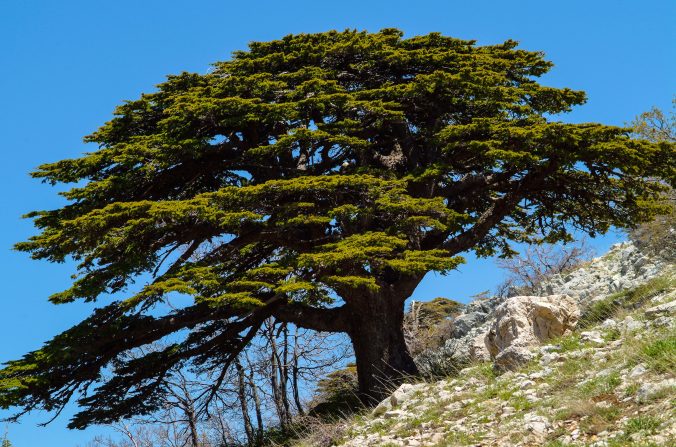10,000 years ago, vast cedar forests stretched across the eastern Mediterranean towards Mesopotamia and what is now southwestern Iran.
The cedar of Lebanon or Lebanese cedar is a species of tree in the pine family, native to the mountains of the Eastern Mediterranean basin. It is a large evergreen conifer that has great religious and historical significance in the cultures of the Middle East, and is referenced many times in the literature of ancient civilisations.
It is no exaggeration to say that the magnificent cedar of Lebanon played a crucial role in the development of civilisation. We know, that 10,000 years ago that vast cedar forests stretched across the eastern Mediterranean towards Mesopotamia and what is now southwestern Iran. Unfortunately, its native range is now confined to isolated mountains in Lebanon, Syria and southern Turkey, although it is a popular ornamental tree in parks and larger gardens in western Europe and parts of the North America.
In the ancient world, cedar was a valuable commodity. Cedar wood was used for temples and palaces in Assyria, Persia, Babylon and beyond. It was heavily traded by the Phoenicians, a maritime people who used the timber for ships, buildings and furniture. Cedar resin was used for embalming bodies by the ancient Egyptians, and its shavings have been found scattered in pharaohs’ tombs alongside cedar wooden chests. Cedars are mentioned in the Bible and they were used for the roof of Solomon’s Temple in Jerusalem in about 830 BC.
There are many ancient stories emphasizing human dominance over nature often featured the cutting of cedars. The real-life over-exploitation gave rise to some very early conservation efforts. For example, in AD 118 the Roman emperor Hadrian even created an imperial cedar forest. However, preservation since then has been patchy at best.
The mature cedar of Lebanon is improbably graceful for such a substantial tree – it can be 35 metres high, with an imposing truck up to 2.5 metres across. Unusually, especially for a conifer that grows in snowy conditions, the branches are almost horizontal. Although cedar branches are solidly built, alarmingly for no apparent reason mature trees now and then shed a branch, sometimes weighing several tons.
Bottle-green or blue-green densely packed cedar needles grow in tiers. The bark is dark grey and exudes a perfumed balsamic resin, which makes a walk through a cedar grove quite special. Oval cones, roughly the size of a large lemon, are produced only every other year and break up on ripening scattering numerous tiny seeds.
Tolerant of freezing weather in winter and prolonged summer droughts, with wood that is durable, resistant to decay, gorgeously reddish, delightfully fragrant and available in conveniently large pieces.
The cedar is culturally important; the national anthem refers to the glory of the county lying in its cedars and it appears on the Lebanese flag.
In Lebanon itself, the cedar is culturally important; the national anthem refers to the glory of the county lying in its cedars; “symbol of eternity”, and it appears on the Lebanese flag. The authorities have tried to protect the last few magnificent stands from development but, despite the tree’s common name the best place to see largest numbers of naturally occurring cedar of Lebanon is now in the Taurus Mountains of southern Turkey.
